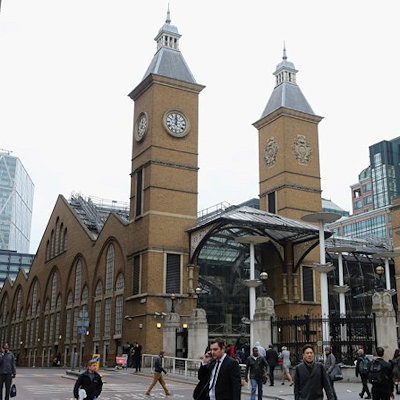
Like us on Facebook
PLACE NAMES


 
|
|
Leyton
|

|
|
|
Leyton is in the Lower Lea Valley, the river forming its western boundary.
The area rises from low-lying marshland along the Lea to over 90 feet at Whipps Cross on the southern edge of Epping Forest. Leyton is partially bisected by the A12 (M11 link road), with most of the district lying on the north-west side of this busy traffic artery through east London.
The High Road Leyton bridge crossing the A12 offers some of the best views in London of the Olympic Park, which also borders the district, as well as of skyscrapers further west. It borders Walthamstow along Lea Bridge Road and areas of the London Borough of Hackney via the River Lea.
Paleolithic implements and fossil bones show that early man hunted in Leyton. A Roman cemetery and the foundations of a Roman villa have been found here. From Anglo-Saxon times, Leyton has been part of the County of Essex. The name means "enclosed land (tun) by the River Lea" and was also known until 1921 as "Low Leyton". In the Domesday Book, the name is rendered as Leintun. at which time the population was 43.
The ancient parish church of St Mary the Virgin was largely rebuilt in the 17th Century. The parish of Leyton also included Leytonstone. The old civil parish was formed into an Urban District within Essex in 1894 and it gained the status of Municipal Borough in 1926. The parish and urban district were officially known as Low Leyton until 1921. In 1965, the Municipal Borough of Leyton was abolished and was combined with that of Walthamstow and Chingford to form the London Borough of Waltham Forest, within the new county of Greater London.[6] Although Leyton did not become officially part of London until 1965, the borough formed part of London's built-up area and had been part of the London postal district since its inception in 1856 and the Metropolitan Police District since 1839.
The main route through the town is the High Road, which forms part of the ancient route to Waltham Abbey. At the top end of the High Road is a crossroads with Lea Bridge Road and Hoe Street. This junction and the surrounding district is known as Bakers Arms, named after the public house which has now closed down. The pub was named in honour of the almshouses on Lea Bridge Road built in 1857 by the London Master Bakers' Benevolent Institution.
During the 17th and 18th centuries, Leyton was a "pretty retiring place from London" for wealthy merchants and bankers; in 1766 there were said to be 50 or 60 gentlemen with houses in the parish. Leyton's development from an agricultural community to an industrial and residential suburb was given impetus by the arrival of the railway. First at Lea Bridge Station in 1840, then at Low Leyton in 1856 (now Leyton Underground). Finally Leyton Midland Road opened in 1894, after an elevated line had been built on brick arches across the already developed streets. However, not all the green spaces were lost, 200 acres (81 ha) of Epping Forest within Leyton's borders were preserved by the Epping Forest Act 1878. In 1897 Leyton Urban District Council purchased the land for a formal park close to the town hall; it opened in 1903 as Coronation Gardens, named after the coronation of King Edward VII. In 1905, the "Lammas land", common pasture land on Leyton Marshes, was purchased by the council for use as a recreation ground.
In World War I, about 1,300 houses were damaged by Zeppelin raids. By the 1920s, it had become a built-up and thriving urban industrial area known for manufacturing neckties and for its Thermos factory. During the Blitz of World War II, Leyton suffered as a target because of its proximity to the London Docks and Temple Mills rail yard. The yard (named after an ancient mill owned by the Knights Templar) is now reduced in size as part of it has become a retail park 'Leyton Mills', whilst the rest has been renovated to serve as a depot for high speed trains.
After World War Two, Leyton suffered from large-scale industrial decline in the second half of the 20th century.[10] But, like much of east London, Leyton, which also borders the Queen Elizabeth Olympic Park, has benefited from significant regeneration projects over the past decade. Parks have been spruced up, some new small parks and gardens created and several tower blocks have been demolished.The millennium was marked with a clock tower in the Lea Bridge Rd area and a major piece of street art at Baker's Arms. And, most recently, in the build-up to the Olympics, Waltham Forest Borough Council spent £475,000 restoring 41 shopfronts on the part of Leyton High Road closest to the 2012 London Olympic Games site. The Olympics authority also funded the smartening up of pavements and street furniture.
|
 Feel free to Email me any additions or corrections Feel free to Email me any additions or corrections
LINKS AVAILABLE TO YOUR SITE
| |





